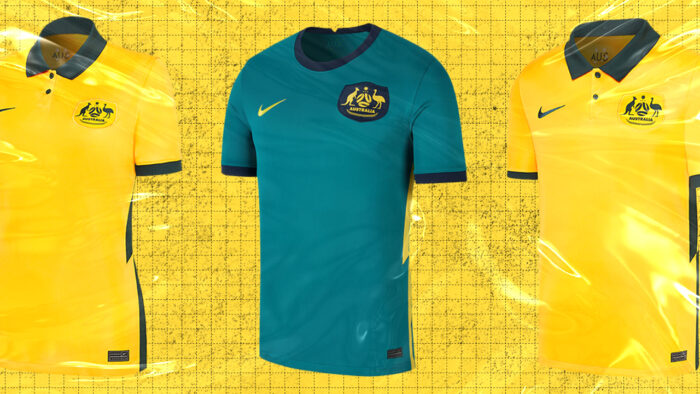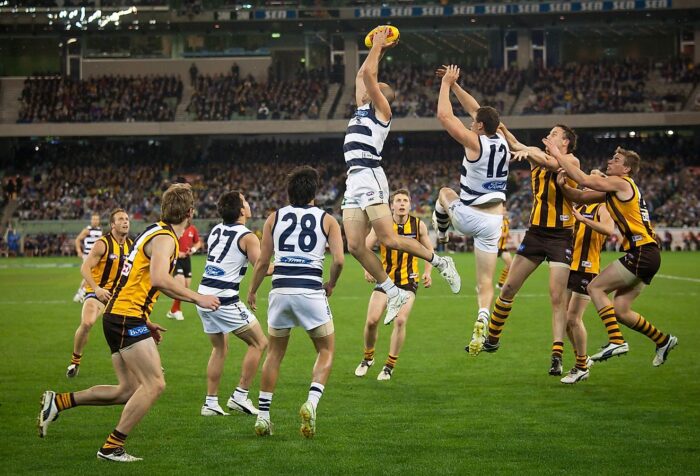Australians are known to be passionate about sports, regularly filling stadium venues or glued to their screens whenever there are live broadcasts, eager to catch the latest action. They’re also fiercely loyal to their favourite teams, often buying shirts and other merchandise, which helps those sporting clubs generate important revenues.
Given the relatively low population of just under 27 million people Down Under, while that domestic audience is certainly captivated, it’s also quite small compared to other countries. This means that revenue generation is vital, both for the competition and the teams involved, ensuring they remain economically sustainable.
Likewise, it’s also worth pointing out that based on the 2024 list published by GQ, aside from those involved with individual sports like Daniel Ricciardo in Formula One or golfer Cameron Smith, the highest-earning Australian sporting stars are participating in overseas competitions. These include Ben Simmons in the NBA, Jordan Mailata in the NFL, and Liam Hendriks in MLB, all of which are North American major league sports.
By comparison, Australian sports teams earn much less in terms of annual revenues, although some leagues do rank quite well. For example, the Australian Football League (AFL) ranked 14th globally in 2024, generating similar incomes to the Indian Premier League (IPL) in Twenty20 cricket. National Rugby League (NRL) ranked 27th in the world, and the highest of any domestic rugby competition.
Merchandising, Sponsorship, Licensing

Source: sportico.com
Wander around most Australian cities, you’ll often see people wearing shirts or tops and caps bearing the logos of their favourite sports teams. These are usually officially licenced merchandise, and clubs generate regular income from products like replica team jerseys, caps, and other products. Branding is important for the teams and for their sponsors, whose name is typically emblazoned across the front of jerseys.
During the 2024 season, nine of the NRL rugby league teams had jersey sponsorships with casinos or gambling, and they are often willing to pay a premium to secure sporting partnerships. Online pokies and casino games are among the most popular activities in Australia, according to CasinoAus guides and reviews, and more than 80% of the population regularly wagers on such games.
Teams can make around $1 million AUD from their shirt sponsorships with gambling companies, although there has been a growing wave of pushback in recent years, while the government is planning a crackdown on gambling advertising. Banning front-of-shirt casino and betting sponsorship would be a significant hit for Australian rugby league clubs, and the NRL itself, given there are partnerships that generate additional revenues based on performance.

Source: unsplash.com
When the 2024 NRL season concluded, twelve clubs had betting or casino companies listed as partners, including two with branding agreements for stadium naming rights. Current proposals are looking at the removal of gambling sponsors by 2025, although it will be interesting to see how clubs replace such important revenues, which other industries are rarely willing or able to match when negotiating sponsorship deals in Australia.
Earlier this year The Guardian reported on AFL deals, with leadership of Aussie rules confirming the organisation receives a percentage of gambling turnover, beyond the official sponsorship deals in place. They also indicated that such revenues are a significant proportion of the overall revenues for the sport. At the moment, all groups involved in sponsorship reforms are proceeding with caution, given that an outright ban could be devastating for sports revenues.
Intriguingly, the NRL is looking at hosting some Round One games in Las Vegas, hoping to tap into the booming US online gambling market, and that’s indicative of just how closely tied Australian sports are to wagering activity. Any such deal could potentially be worth hundreds of millions of dollars in gambling and sponsorship revenues.
Ticket Sales, Matchday Revenues, Broadcasting Rights
One of the most consistent and reliable sources of revenue in Australian sports, ticket sales and matchday revenues have always been the bread and butter for clubs. And for the fans who can’t attend at venues or simply prefer watching matches at home, broadcasting rights are another major source of income for teams and competitions, particularly for Aussie rules and rugby league.
According to Footy Industry data published in October, shortly following the conclusion of the 2024 AFL season, gross matchday attendances reached a new record of 8.1 million attendees in total. Along with registering the highest average attendances throughout the season, Collingwood also achieved the top individual match attendance, when 100,024 fans attended their match against Brisbane at the MCG.
The AFL has also been boosted by extended broadcast and media rights deals, including a $730 million AUD package with Seven over the next five years, worth around $147 million AUD per season on average. Mobile rights provider Telstra will also continue their agreement, estimated to be worth approximately $50 million AUD each season.

Source: icetonline.com
Although no precise numbers are available for pay-TV network Foxtel, they are the biggest source of broadcast revenue. Looking ahead, the AFL recently agreed the biggest domestic sports broadcast rights deal in Australian history, running from 2025 to 2031. This seven-year contract will be worth an incredible $4.5 billion AUD in total, agreed with Foxtel pay-TV, Seven free-to-air, and Telstra for mobile platforms.
While data for the NRL has yet to be officially announced, the rugby league competition did report record $593.8 million AUD revenues in 2022, which included an operating surplus of $62.9 million AUD and an overall reduction in operating expenditures of $17.1 million AUD. Once the numbers are available for the 2024 NRL season, current predictions are that it could be another record season for the league.
Under the terms of their current deals from 2024 to 2027, the NRL brings in around $400 million AUD each season from broadcasting rights. Domestic agreements include Nine for the free-to-air audience and Foxtel for pay-TV, along with Sky for the pay-TV market in New Zealand. Still some way behind the AFL for broadcast revenues, the NRL is facing mounting pressure to renegotiate for a significant increase, when the next window for opportunity is available.

